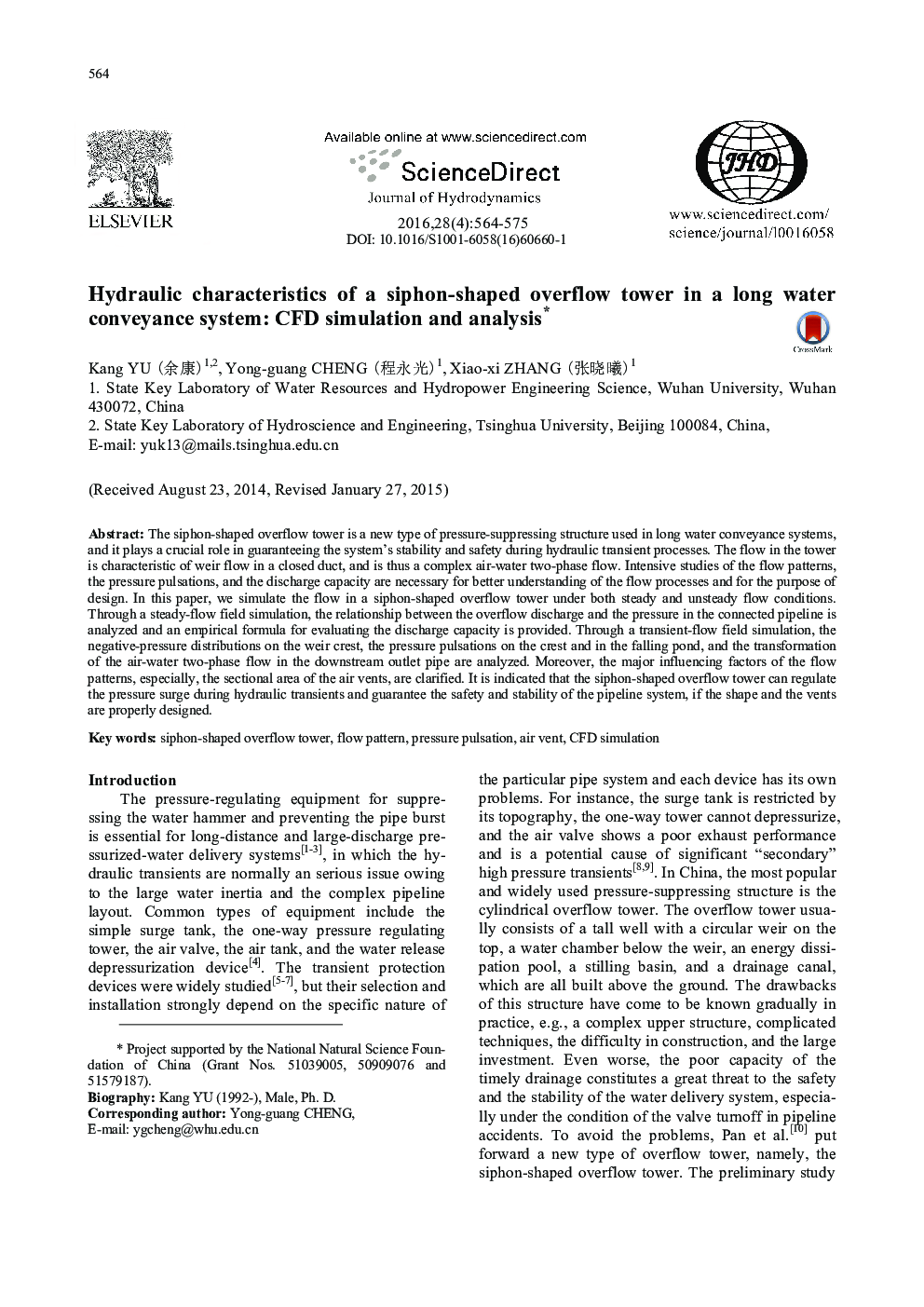| Article ID | Journal | Published Year | Pages | File Type |
|---|---|---|---|---|
| 1721813 | Journal of Hydrodynamics, Ser. B | 2016 | 12 Pages |
The siphon-shaped overflow tower is a new type of pressure-suppressing structure used in long water conveyance systems, and it plays a crucial role in guaranteeing the system's stability and safety during hydraulic transient processes. The flow in the tower is characteristic of weir flow in a closed duct, and is thus a complex air-water two-phase flow. Intensive studies of the flow patterns, the pressure pulsations, and the discharge capacity are necessary for better understanding of the flow processes and for the purpose of design. In this paper, we simulate the flow in a siphon-shaped overflow tower under both steady and unsteady flow conditions. Through a steady-flow field simulation, the relationship between the overflow discharge and the pressure in the connected pipeline is analyzed and an empirical formula for evaluating the discharge capacity is provided. Through a transient-flow field simulation, the negative-pressure distributions on the weir crest, the pressure pulsations on the crest and in the falling pond, and the transformation of the air-water two-phase flow in the downstream outlet pipe are analyzed. Moreover, the major influencing factors of the flow patterns, especially, the sectional area of the air vents, are clarified. It is indicated that the siphon-shaped overflow tower can regulate the pressure surge during hydraulic transients and guarantee the safety and stability of the pipeline system, if the shape and the vents are properly designed.
